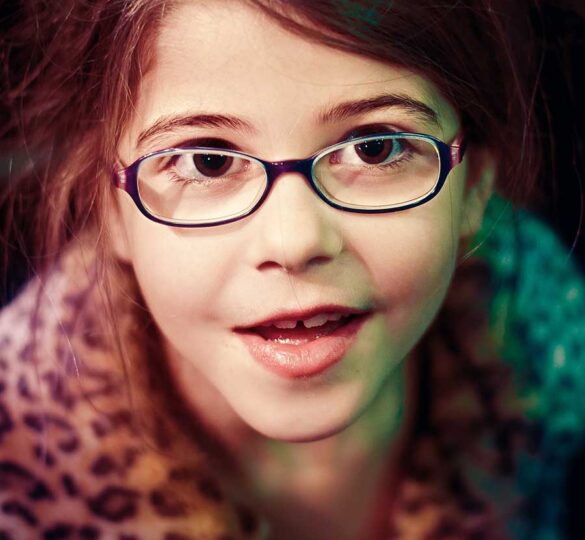Childhood Glaucoma: Diagnosis, Treatment, and Hope
Pediatric glaucoma occurs in babies and young children.

Glaucoma is usually associated with adults, especially older adults. Although rare, pediatric glaucoma—also referred to as congenital glaucoma, pediatric, or infantile glaucoma—occurs in babies and young children.
While there are many similarities between adult and childhood glaucoma, there are also several differences. Pediatric glaucoma can become aggressive very quickly. While glaucoma can cause vision loss in children, unlike adults, they can also have permanent vision loss from amblyopia and corneal scarring before treatment.
Childhood glaucoma falls into two categories: primary congenital glaucoma and secondary glaucoma.
Primary Congenital Glaucoma
Primary congenital glaucoma, also referred to as infantile glaucoma, is the most common form of pediatric glaucoma, accounting for 50 to 70 percent of childhood glaucoma, and affects about one in every 10,000 infants. Untreated, it is a significant cause of childhood blindness and is responsible for up to 18 percent of childhood blindness. “Primary” means the disease isn’t due to another illness or condition, such as a tumor. “Congenital” indicates it’s present at birth.
Secondary Pediatric Glaucoma
The causes of secondary pediatric glaucoma can include injuries, other ocular conditions, such as the surgical removal of congenital cataracts, or disease. For example, conditions such as Axenfeld-Rieger Syndrome, aniridia, Sturge-Weber Syndrome, and neurofibromatosis can be associated with childhood glaucoma. While not all patients with these conditions will develop glaucoma, their incidence of glaucoma is much higher than average.
Pediatric Glaucoma Can Be Hereditary
Approximately ten percent of primary congenital glaucoma is inherited. In addition, research has identified some specific gene mutations that are linked to pediatric glaucoma, for which genetic testing and counseling for affected families may be available.
Some conditions that cause secondary glaucoma can also be inherited. For example, diseases such as neurofibromatosis and aniridia are dominantly inherited and are passed to the children of affected individuals approximately 50 percent of the time. However, the incidence of glaucoma that occurs in association with these conditions is not predictable.
Signs & Symptoms of Pediatric Glaucoma
While some symptoms may appear at birth, glaucoma isn’t always immediately obvious. Children can develop glaucoma as they grow. It’s also possible for children to have glaucoma with no symptoms, which is why children must have regular eye exams.
With babies, doctors may notice several things that can indicate glaucoma, including:
- Large eyes
- Eye shape or size
- A dull or cloudy eye
- Increased blinking
- Tears when not crying
- Redness in the sclera (the white part of the eye)
- Sensitivity to light
Signs in older children and teens may include:
- Blurry vision
- Difficulty seeing things off to the side
- Nearsightedness that gets worse
- Headaches
How is Childhood Glaucoma Treated?
Depending on a child’s age, the cause of the glaucoma, and other factors, an eye surgeon or pediatric ophthalmologist may make changes to medications taken for another condition and prescribes treatments such as:
- Eye drops or medicines taken by mouth
- Surgery, including laser treatments (usually the best treatment for babies or young children)
The doctor will continue to check the pressure and perform ongoing tests after treatment. Some children may need more than one treatment to keep their pressure down and prevent damage.
Conclusion
Children with glaucoma can lead vibrant and full lives. However, glaucoma can result in permanent and significant vision impairment, so early diagnosis, treatment, follow-up, and treatment adherence are crucial. In addition, parents can gain useful knowledge about pediatric glaucoma to ensure they’re doing everything possible to help their child who has been diagnosed with glaucoma.
Your support can help dedicated researchers continue to discover the causes and cures for glaucoma. Your donations give hope to those living with glaucoma and accelerate our search for a cure.
Booklet: “Childhood Glaucoma” is a free reference guide for parents and professionals involved in the care of children with glaucoma — Download a PDF
Published on August 12, 2021. Last reviewed on April 26, 2023.